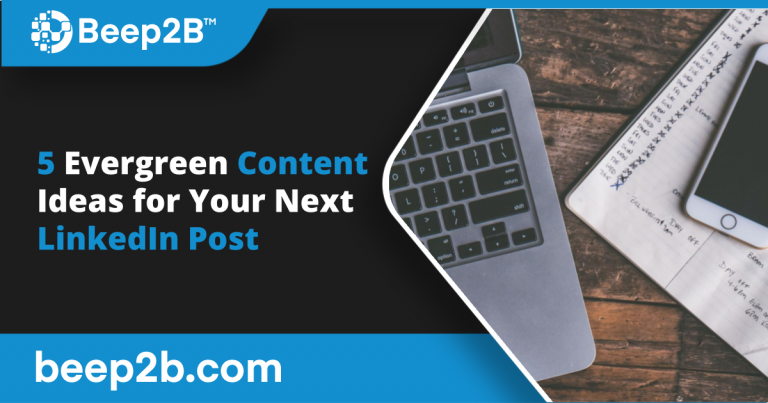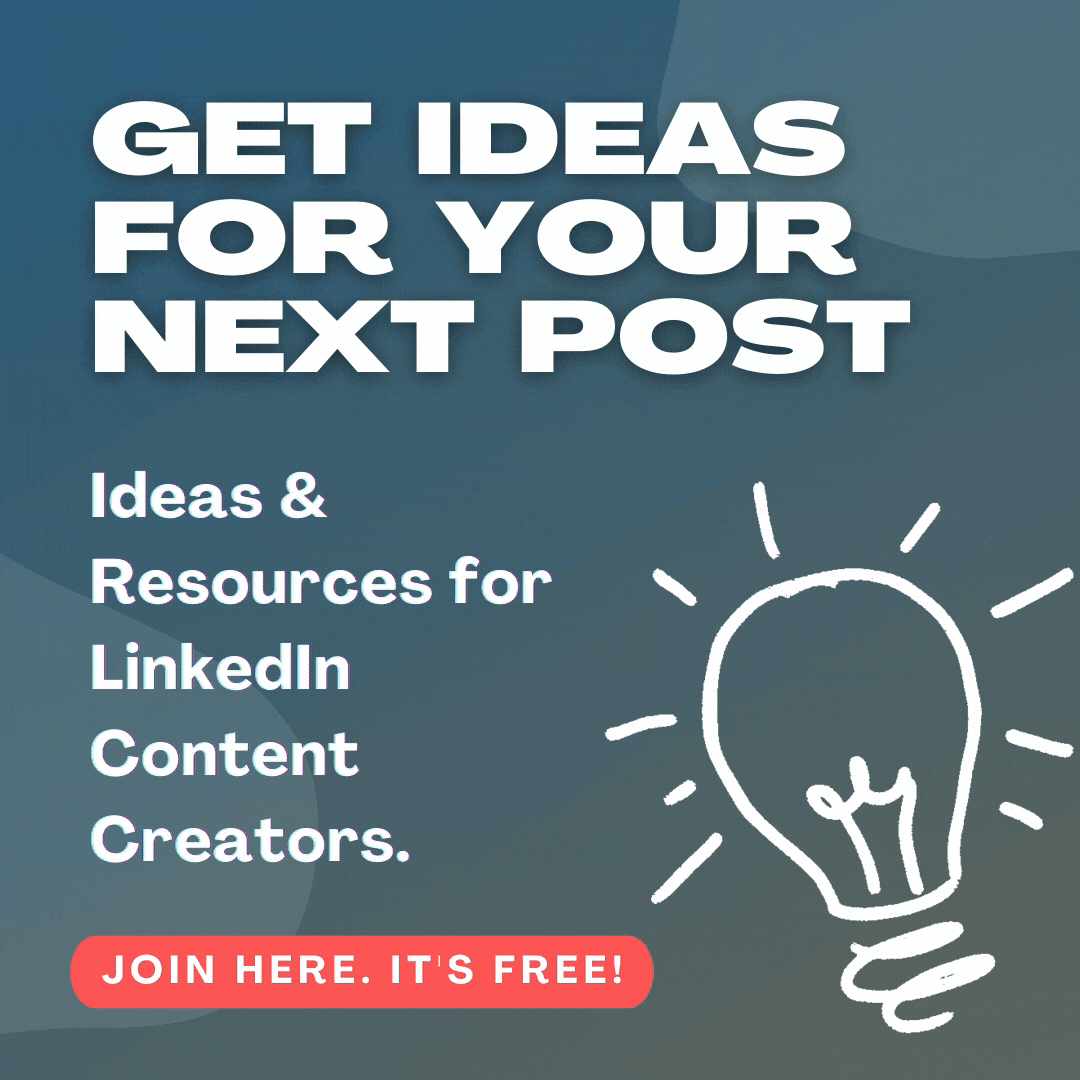Consistent, high-quality content is the key to any successful content strategy, including LinkedIn.
Hubspot recommends you post two to five times per week, but experts stress that content value is just as important as frequency.
Let’s not forget that you’re also busy posting on your website, other social media platforms, and more.
While frequent, quality posting on LinkedIn is crucial for building and engaging your audience, it’s not always easy to do.
Understandably, it can be difficult to find fresh, valuable content ideas to share with your audience.
Today, we’re here to help with a framework for the top evergreen content ideas. These content ideas will give you a general strategy that you can apply to several different post ideas.
What is Evergreen Content?
First and foremost, it’s important to understand what evergreen content is. Trending content is hot at the moment, it’s relevant, but it’s time-sensitive. For example, talking about brand new industry news, COVID-19, or a new product. On the other hand, evergreen content maintains its relevance for a long time.
Evergreen content is not bound by current events, the core of it stays valuable for a long time. It’s long-lasting and can help you attract your target audience for a long time after it’s posted. We’ll dive deeper into the top LinkedIn evergreen content ideas, but some general evergreen formats include:
- Branding/ company story videos
- How-to tutorials
- Product reviews
- Tips on an evergreen topic
- Lists
- FAQs
- Tools/Calculators
- Case studies or research studies
Benefits of Evergreen Content
While you certainly want to share timely content on your LinkedIn page, you must mix in a healthy amount of evergreen content. Here are the top benefits of evergreen content:
- Improve search rankings. Evergreen content is more likely to rank on search engines, like Google, but also on sites like LinkedIn.
- Increase page views. When used on LinkedIn, evergreen content will drive traffic to your profile for much longer than trendy content. It has the potential to continue bringing traffic to your profile and even website for long after it’s posted.
- Generate leads. By increasing your traffic and attracting more of your target audience, evergreen content will help you continue to generate leads.
- Strengthen brand authority. Quality evergreen content is extremely valuable to readers. It’s more likely to be shared by others, which in turn helps build your online presence.
- Save time. Seasonal or time-sensitive content is only relevant for a set period. After it runs its course, it’s not very useful. You may even have to continually update or even deactivate it (especially seasonal/holiday content). Evergreen content is an excellent time investment, as it works longer for your brand.
1. Experience Post
The first type of post is an “experience post.” For this form of content, you share a helpful experience that you had. The experience should be relevant to your audience and help them overcome a pain point in some way.
One example of a title is “What I wish I had known about marketing X years ago.” In this type of post, you’d explain something you did wrong and how you had to learn the hard way. To make this piece the most effective for your audience, clearly indicate what you learned, what you would have done differently, and how the experience changed you. Teach them how they can apply this knowledge to their own pursuits.
2. Listicle
A list post, or listicle, is another good old-fashioned evergreen format. Listicles are shared twice as much as other forms of content. For list posts, you are giving people X number of steps or X tips to accomplish something. For example, 5 steps to [insert solution to one problem your audience has], and then go to explain every step to achieve the solution your audience wants.
According to Steven Poole from The Guardian, “psychologically, the listicle is seductive because it promises upfront to condense any subject into a manageable number of discrete facts or at least factoids.”
People love lists because they are easy to follow and extract the main points from. They’re very skimmable, which is great for online content. Furthermore, lists are easy to repurpose or recycle into infographics, animated videos, or quick social media posts.
3. Tool Post
People are always on the lookout for tools that can improve their work, streamline their processes, and save them time. That is why a post about a certain tool can be so valuable. For example, “I use this tool daily and it saves me up to 5 hours per week”, and then explain what the tool is and how it works.
These posts are also great to combine with the list format. You can offer a list of tools that help achieve a certain goal and give a snippet about each tool. When done tastefully, this is also a good place to promote your own tool.
4. Roadmap Post
The roadmap to success is not easy to discover, and people are always searching for guidance. Roadmap posts are a way to share the strategy and process you used to get from point A to B.
For example, “2 years ago I had zero clients and now I get to choose who I work with.” In this kind of post, you would then explain what you did in the last 2 years to get to the point you are right now.
It’s easy to get long winded in a personal story like this, but you still need to create a clear, concise post. The most valuable roadmap posts:
- Make use of clear headers
- Use short paragraphs
- Highlight/bold key sentences
- Provide a clear set of actionable steps
- Emotionally engage the audience in your personal venture
- Connect your process to your audience’s goals
Again, this post is a good place to position yourself as a solution. Sharing your roadmap to success increases your credibility and earns rapport with your audience. However, they need not struggle through the process the same way if you are here to help with a relevant service.
5. Admiration Post
One of the best ways to get someone to engage with your content is to talk about them. An admiration post is an excellent way to show your appreciation. It can also help you to build or strengthen a relationship with a client, coworker, mentor, or another relevant person.
An example could be “I recently worked with X client and realized what a wonderful person they are because of X, Y, Z”. Then, explain what you’re working on with them and why it’s meaningful to you.
If you tag the person mentioned and send them a quick personalized message with the post, there’s a great chance they’ll share it on their page. It may also encourage them to leave positive feedback/testimonials or to create an admiration post about you in the future.
Start Creating Evergreen LinkedIn Content Today
Evergreen content should certainly be part of your LinkedIn content strategy. These 5 main formats can help you come up with an abundance of valuable content ideas for your audience and your brand. Each idea is easy to adapt and turns into several unique posts. Use these 5 evergreen content ideas for your next LinkedIn post!


